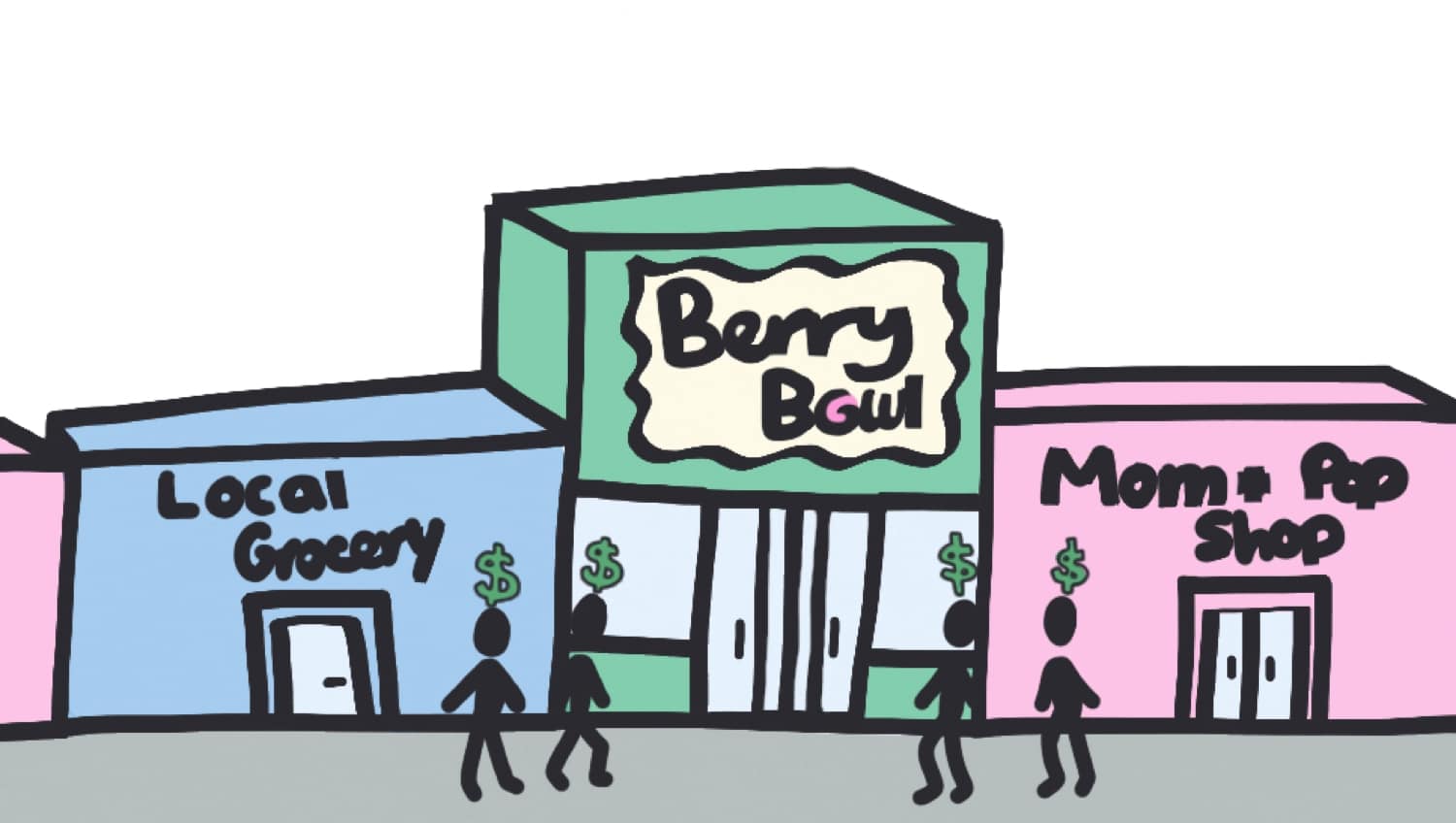I’m here to confess a sin. I disobeyed the anti-gentrification posters stuck around campus. I ate at Berry Bowl. Multiple times.
The problem is that I don’t believe that buying an açaí bowl is wrong. In fact, punishing a business for “gentrifying” is misguided, whether that business is Occidental College or an overpriced fruit-bowl vendor. Unfortunately, neither you nor I can stop gentrification. Cities evolve. The excesses of gentrification can certainly be problematic and we should ensure that local government ameliorates them, but generally, gentrification isn’t bad in and of itself. It’s a symptom of a wider problem: rising income inequality in America.
Of course, there are problems with gentrification. Economic displacement is a serious issue. Sometimes, this means residential displacement. In high-risk urban areas, property values do surge, forcing families to move. Even when the government steps in with rent control and public housing, some neighborhoods still have no room for a middle class. The people that stay in their neighborhoods see them change as others move in. Competition from new and chic stores leaves small businesses vulnerable in ways that residents sometimes aren’t. The nature of the neighborhood can change, often forever.
There’s also the cultural issue. Rising housing prices force families who have lived in a neighborhood their whole lives to move, chains to replace local restaurants and art galleries to displace small stores. A New York Times piece about the wealth divide in New York’s Chelsea neighborhood captures the issue. Residents feel a “great alienation” in their own neighborhood. That means that a woman who wants to share her cultural heritage with her daughter has to travel farther to find Puerto Rican dishes. Residents in public housing find that they can no longer afford the stores in the neighborhoods around them. They don’t belong.
A sense of belonging is hard to measure and gentrification is an elusive concept to define. There is no consensus among political scientists on the economic ramifications of gentrification for residents. The quintessential problem of gentrification — displacement — is still the subject of academic debate. Some studies show displacement from gentrification, but some don’t. A few of the preeminent researchers on gentrification found that “poor households residing in gentrifying neighborhoods were less likely to move than poor households residing elsewhere.”
Many of the people living in these neighborhoods are also willing to pay higher rents for a better environment. Another study found that in gentrifying neighborhoods, “a poor household was more likely to exit poverty than to be replaced by a non-poor household.” Of course, this doesn’t mean that increased rents can’t cause hardship and suffering on the individual level. However, gentrification can provide jobs and opportunities for local residents instead of driving them away. The urban policy department of The New School conducted a study on businesses showing the same trends.
The City of New York commissioned a study of gentrification that showed that poor residents of gentrifying neighborhoods were better off than poor residents of poor neighborhoods on almost every metric. People living in public housing in gentrifying neighborhoods had a higher quality of life, earned more and suffered from less violent crime. Poor children in gentrifying neighborhoods scored far higher on standardized tests, in part because they were in better schools.
Gentrification is one of the ways that people can lift themselves out of the vicious cycle of poverty that America’s cutthroat capitalism can create. This study of NYC points to a truth that many opponents of gentrification fail to recognize — living in a wealthier neighborhood is desirable. Darlene Waters, a retired nursery school teacher in public housing, lives in Chelsea, one of the neighborhoods which suffers from hyper-gentrification. When the New York Times asked her whether she preferred Chelsea now or before it became gentrified, Waters said that “I’d rather have Chelsea as it is today … It’s brighter, it’s beautiful.”
Gentrification can be desirable, and not only because it can make neighborhoods brighter. We want neighborhoods to improve, just not at the cost of those already living there. The problem is economic segregation, the divide between rich and poor that makes neighborhoods have to choose between them. We need a stronger and richer middle class to bridge the gap. Professor of City and Regional Planning at the University of California, Berkeley Karen Chapple argues that the negative effects of gentrification are caused by the reduced buying power of the American poor and middle classes. Therefore, it is the government’s responsibility to step in and create incentives for local businesses to hire from their neighborhoods, to build enough public housing to safeguard the original residents and ease the economic stranglehold of the wealthy. Gentrification is not an evil to purge; it’s a fact of life.
Don’t blame businesses for catering to their markets or Occidental for purchasing buildings for its own use instead of affordable housing and especially don’t blame people who like berry bowls for eating them. Social responsibility is not our only responsibility (otherwise we’d all be penniless). We need systematic change in America to fix issues like gentrification, not empty rhetoric and posters.
Milo Goodell is a sophomore Politics major. He can be reached at mgoodell@oxy.edu.
![]()




































